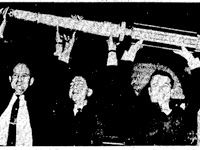San Diego Air and Space Museum [CA]
The Museum provides visitors with a journey through the history of flight. Visitors may stand beneath a model of the Montgolfier brothers' hot air balloon of 1783—the first manned vehicle in recorded history to lift man above the Earth. They can view specimens of aircraft from World War I, or marvel at the antics of the barnstormers of the 1920s. Mint condition aircraft help visitors appreciate the increasingly complex technology represented in the classic military aircraft of World War II, Korea, and Vietnam, and exhibits on space flight project aeronautics into the future.
The museum offers exhibits, tours, research library access, educational programs, and occasional recreational and educational events.
